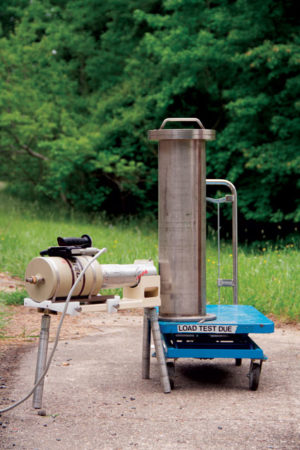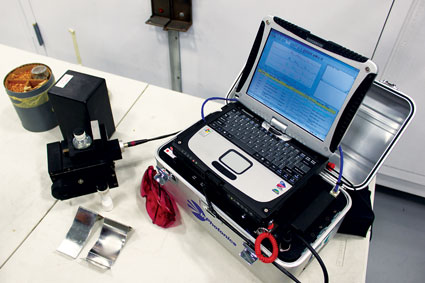Safe treatment of recovered chemical warfare materiel (RCWM) relies on thorough assessment, packaging and storage before the destruction solution is deployed. RCMD’s proven assessment technologies provide critical information on site during suspect CWM recoveries, determining whether a munition is explosively configured or contains chemical agent.

Digital Radiography and Computed Tomography System (DRCT)
DRCT technology is a transportable, non-intrusive assessment system that analyzes and provides on-site information about the contents of unidentified munitions without opening them. This greatly reduces risk to the public, workers and emergency response personnel by rapidly obtaining detailed information and distributing it to the appropriate authorities and responders.

The Portable Isotopic Neutron Spectroscopy (PINS)
The Recovered Chemical Materiel Directorate uses PINS as a transportable non-intrusive assessment system to analyze and provide on-site information about the contents of unidentified munitions without opening them. This greatly reduces risk to the public, workers and emergency response personnel by rapidly obtaining detailed information and distributing it to the appropriate authorities and responders.

Raman Spectrometer
The Raman Spectrometer identifies the contents of Chemical Agent Identification Sets (CAIS), glass vials containing various agents and industrial chemicals once used to train soldiers. The Raman Spectrometer rapidly obtains detailed information about suspect chemical warfare materiel and distributes that information to the appropriate authorities and responder personnel, greatly reducing the risk to the public, workers and emergency response personnel.
